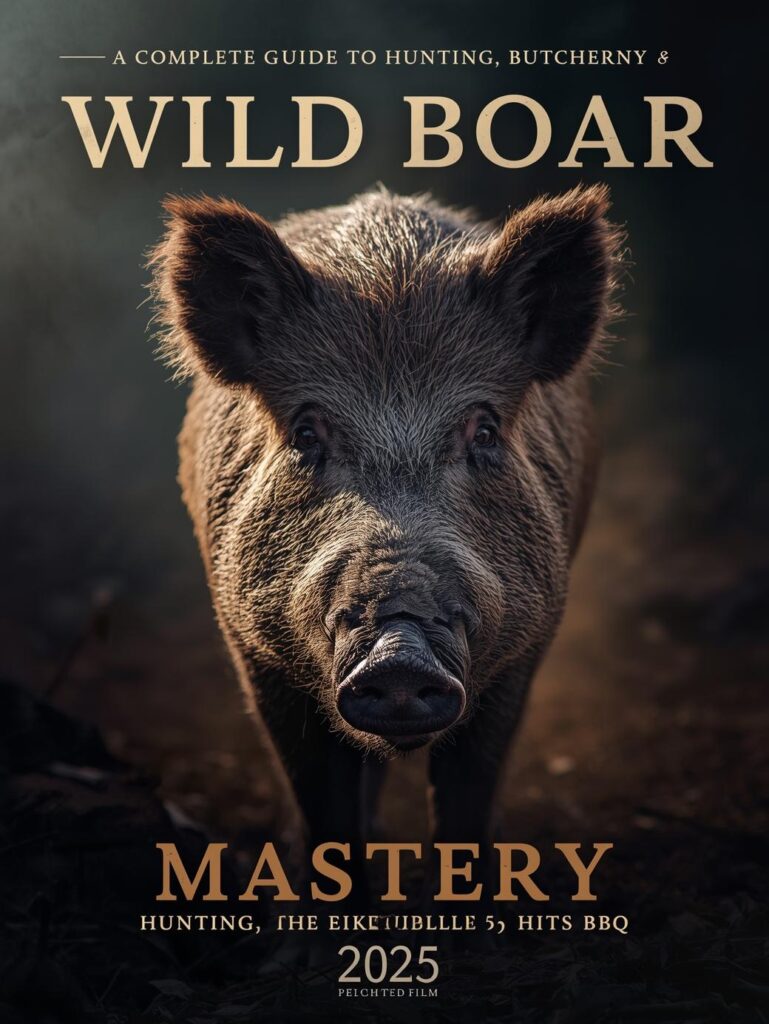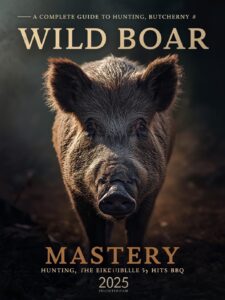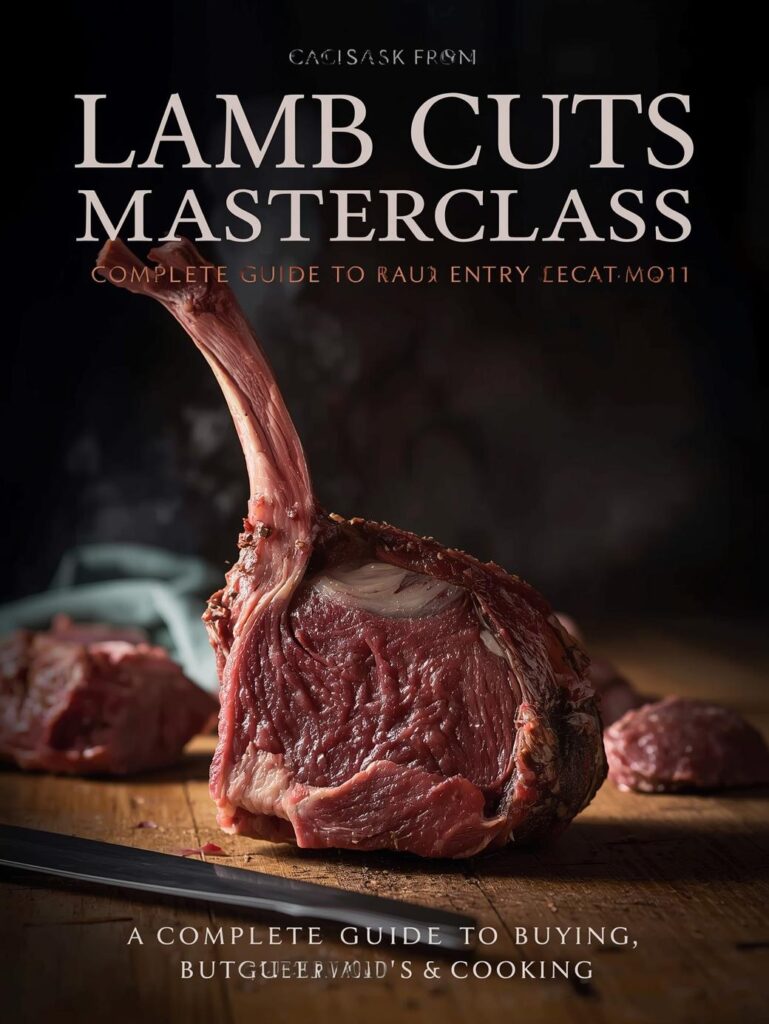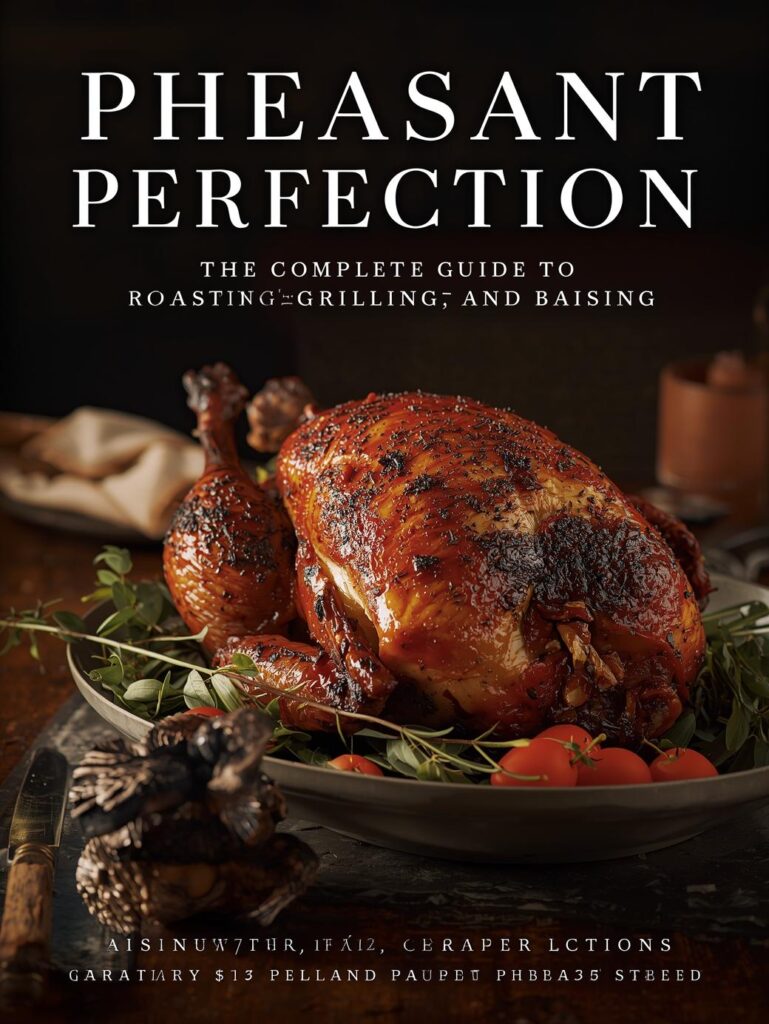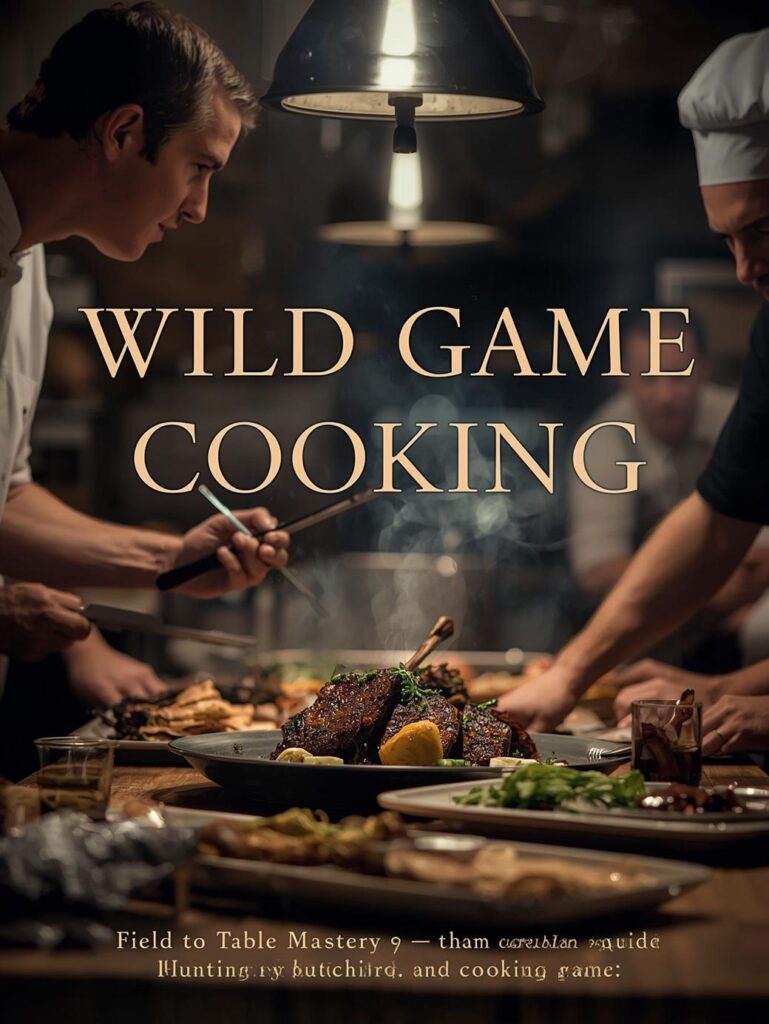The Original Heritage Pork: Wild boar isn’t just pork’s ancestor—it’s pork with a doctorate in flavor. Where domestic pork is mild and marbled, wild boar is lean, muscular, and carries the complex taste of the forest. Cooking it isn’t a substitution for pork; it’s an entirely different culinary discipline that rewards respect, technique, and a willingness to embrace bold, untamed flavors.
Wild Boar Mastery: The Complete Guide to Hunting, Butchering, and BBQ
“Wild boar is the philosopher’s stone of meat. It transforms the hunter into a butcher, the cook into a alchemist, and the eater into an adventurer. This isn’t meat you simply cook; it’s meat you negotiate with. You respect its leanness, you counter its gaminess, and you reward its intensity with low, slow heat and bold, bridging flavors. Master boar, and you master the essence of game itself.”
Wild Boar Mastery: The Complete Guide to Hunting, Butchering, and BBQ
Download Our Wild Boar Quick-Reference - Field Care, Butchering & Cooking Guide
Across America, wild boar is both a destructive invasive species and a gourmet’s treasure. This paradoxical animal offers some of the most flavorful, challenging, and rewarding meat you’ll ever encounter. But you can’t treat it like domestic pork. Its life of foraging creates lean, dense muscle with a robust, nutty, and deeply savory flavor that demands specific techniques. This guide will take you from field to feast, transforming a formidable game animal into succulent roasts, smoky BBQ, and gourmet charcuterie.
🎯 WILD BOAR VS. DOMESTIC PORK: THE ULTIMATE SHOWDOWN
Understanding the fundamental differences is the first step to mastery.
🐗 WILD BOAR PROFILE
- Flavor: Rich, nutty, earthy, slightly sweet
- Texture: Dense, fine-grained, very lean
- Fat: Hard, sparse, flavorful
- Color: Dark red, almost beef-like
- Cooking: Demands moisture & slow cooking or quick searing
🐖 DOMESTIC PORK PROFILE
- Flavor: Mild, sweet, neutral
- Texture: Soft, tender, well-marbled
- Fat: Soft, abundant, mild
- Color: Pale pink to white
- Cooking: More forgiving, versatile methods
🔪 FIELD & BUTCHERY: THE CRITICAL FIRST STEPS
Quality is determined in the first hours after the harvest.
⚡ The 5 Pillars of Wild Boar Field Care
Fail Here, and No Kitchen Technique Can Save You
- Quick Field Dressing: Gut within the hour. Boar’s body heat and internal bacteria can taint meat quickly. Remove scent glands inside the hind legs carefully.
- Age & Sex Matter: A young sow (under 150 lbs) is ideal. Large, mature boars can have a stronger, more challenging flavor, especially during the rut.
- Rapid Cooling: Get the carcass cooling immediately. In warm weather, pack the body cavity with bags of ice. Field care principles here.
- Proper Skinning: Skin as soon as possible to allow heat to escape. Be careful not to get hair on the meat.
- Wet-Age or Freeze: For the best flavor, wet-age the primals in vacuum-sealed bags for 7-14 days in the fridge. This tenderizes and mellows the flavor.
🥩 THE WILD BOAR BUTCHER’S CHART
Break down the animal with intention, not like a domestic hog.
🎯 Cut-by-Cut Wild Boar Guide
🎯 Maximizing Your Wild Boar Harvest
| Cut | Description | Best Cooking Method | Flavor Profile | Pro Tip |
|---|---|---|---|---|
| Loin/Backstrap | Prime, tender muscle along the back | Grill, pan-sear (Med-Rare), roast | Mildest, most tender | Brine or lard for extra juiciness |
| Ham/Back Legs | Large, lean, working muscle | Low & slow smoke, brine & roast | Rich, hearty, classic “boar” flavor | Inject with marinade before smoking |
| Shoulder/Boston Butt | Tough, connective tissue | Braise, slow roast, pulled boar | Intense, robust, perfect for stews | Cube for chili or slow-cook whole |
| Ribs | Lean, smaller than pork ribs | Braise then grill, slow smoke | Meaty, rich, less fatty | The 3-2-1 method works well |
| Shanks | Tough, gelatinous, bone-in | Braise (Osso Buco), confit | Deep, savory, unctuous | Braising gold—don’t grind these! |
| Trim (Neck, Flank) | Tough, odd-shaped pieces | Grind for sausage, burger, chili | Full-flavored, ideal for blending | Mix 30% with pork fat for sausage |
🔥 THE FLAVOR BRIDGE: TAMING & ENHANCING GAMINESS
Your spice cabinet is the key to transforming wild boar.
🧪 THE MARINADE & BRINE STRATEGY
Tenderize and Infuse Flavor
- Buttermilk Brine: The acid tenderizes and the cultured notes mellow gaminess. 12-24 hours.
- Wine & Herb Marinade: Red wine, garlic, rosemary, juniper berries. Classic for a reason.
- Yogurt-Based Marinade: Common in Mediterranean cooking. Adds tenderness and tang.
- Simple Salt Brine: For premium cuts like the loin. Enhances juiciness without altering flavor. Brining science here.
🌶️ THE SPICE & RUB PHILOSOPHY
Complement, Don’t Mask
- Sweet Spices: Cinnamon, allspice, clove, star anise. Bridge the robust flavor.
- Earthy Herbs: Rosemary, sage, thyme, bay leaf. Mirror the forest floor notes.
- Bold & Bright: Fennel seed, coriander, orange zest, garlic. Cut through the richness.
- Smoky Heat: Chipotle, smoked paprika, black pepper. Add a BBQ dimension. Build your own rub.
🍖 SMOKED WILD BOAR HAM: THE ULTIMATE BBQ SHOWCASE
Apply low-and-slow BBQ science to this majestic cut.
👨🍳 Step-by-Step Smoked Boar Ham
Transform a Tough Cut into Pull-Apart Perfection
- Step 1: Brine or Inject: Brine in a solution of salt, sugar, and spices for 3 days, or inject with a marinade/stock mixture to ensure moisture deep inside the lean muscle.
- Step 2: Season Generously: Apply a bold rub with garlic powder, onion powder, black pepper, and herbs like rosemary and thyme.
- Step 3: Smoke Low & Slow: Smoke at 225-250°F over fruitwood (apple, cherry) or oak until the internal temperature reaches 165°F. Wood pairing guide.
- Step 4: The Texas Crutch: Wrap tightly in butcher paper or foil with a cup of apple juice or cider vinegar to power through the stall.
- Step 5: Finish to Tenderness: Continue cooking until the internal temperature reaches 195-203°F and the meat is probe-tender. Low & slow science.
- Step 6: Rest & Serve: Rest for at least one hour, then pull or slice against the grain.
🚨 WILD BOAR TROUBLESHOOTING: FIX COMMON MISTAKES
🎯 Wild Boar Cooking Rescue Guide
| Problem | Cause | Immediate Fix | Prevention |
|---|---|---|---|
| Tough & Dry | Overcooked lean meat | Shred and mix with a sauce or broth; use in pot pies or hash. | Use a thermometer; brine or lard; don’t cook well-done. |
| Overly “Gamey” | Poor field care, mature boar, rut | Dice small, cook in a heavily spiced chili or curry. | Quick field dressing; choose younger animals; use milk/buttermilk soak. |
| Chewy, Rubbery Loin | Cooked beyond Medium | Slice very thin against the grain for sandwiches or salads. | Cook loin/backstrap to 135-140°F (medium) MAX. |
| Lacks Flavor | Bland seasoning, young animal | Serve with a flavorful sauce (e.g., peppercorn, mushroom, fruit gastrique). | Be aggressive with salt, spices, and marinades. |
| Gristle & Sinew | Insufficient trimming before cooking | Remove what you can after cooking; use for stock. | Take time during butchery to remove all silverskin and hard fat. Butchering tips. |
🏁 EMBRACE THE WILD SIDE OF BBQ
Wild boar is more than just meat; it’s a culinary adventure that will make you a better cook across the board. The techniques you learn for managing its leanness will improve your chicken and turkey. The flavor-balancing skills you develop will enhance your beef and lamb. The patience required for its tough cuts will make you a brisket master.
Start with a simple boar sausage or a braised shank. Respect the animal with proper field care and butchery. Don’t fight the flavor—bridge it, complement it, and celebrate it. When you serve a perfectly smoked boar ham or a beautifully seared loin chop, you’re not just serving dinner; you’re serving a story of skill, respect, and delicious adventure.
Deepen your knowledge with our complete guide to cooking all game meats
No posts selected. Please provide either "slugs" or "ids" parameter.
Continue Your Game Meat Journey: Expand your expertise with these essential guides.

